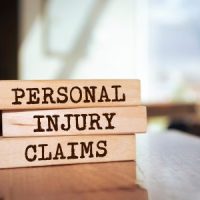Understanding the Doctrine of Last Clear Chance

Let’s pretend that someone runs a red light. You, in your own car, and seeing that driver go illegally through that intersection, could stop, likely, on time to avoid the accident. But the other driver is the one running the red light. So, you decide to just keep going your normal speed, hit him, and whatever happens, happens. After all, the other driver ran the red light–you can legally hit him now…or can you…?
Who is liable in that scenario? The driver who ran the red light, clearly breaking traffic laws? Or you, who just opted to hit him?
The scenario raises a bigger question: when someone breaks a law or rule of the road—for example, a pedestrian crossing in an area with no crosswalk—does that give drivers carte blanche permission to hit that pedestrian, and thus, be free of guilt or liability?
The Last Clear Chance Doctrine
The answer is no, because of what is known as the last clear chance doctrine.
As the name implies, the law imposes liability on whomever had the last clear chance to avoid the accident, but did not. And this can lead to some counterintuitive results—specifically, as in our examples people who run red lights, or who cross the street where they aren’t supposed to, ending up being victims who can sue for their injuries.
The last clear chance doctrine isn’t anything revolutionary. It’s really just a product of causation. Who caused the accident? Was it the pedestrian who crossed without a crosswalk? Or was it the car that saw the person, which could have stopped or avoided that pedestrian, but did not?
Breaking Laws
Negligence does look at whether or not laws (like obeying red lights) were or were not followed. But it also, and perhaps, moreso looks at who acted carelessly or recklessly, and where both parties have, it’s the party that could have avoided the accident that will have some, if not all, of the liability put on him or her.
Last Clear Chance and Comparative Negligence
The last clear chance doctrine does not excuse a victim for his or her behavior or for breaking the law. So, if a car has the last clear chance to avoid a pedestrian who is crossing the street where he or she shouldn’t be crossing, but does not, that driver will be liable–but the pedestrian may also be blamed by the jury for crossing in an area without a crosswalk.
The evidence of the breaking of the law by the victim, may be used as a comparative negligence defense to lower the amount that the Defendant must compensate the victim.
This is why we do not just blindly look at drivers or pedestrians and say “you broke the law, so you were liable.” Negligence cases are more complex than that. Someone who does break the law isn’t always the party that is liable, and even someone who may be cited with a traffic citation, may still be able to get compensation for injuries after an accident, if the accident could have been avoided by another party but it was not.
Who is liable in your car accident case? Call the Knoxville personal injury attorneys at Fox Farley Willis & Burnette, PLLC, today.
Sources:
repository.law.miami.edu/cgi/viewcontent.cgi?article=3881&context=umlr
scholarship.law.ufl.edu/cgi/viewcontent.cgi?article=1489&context=flr











